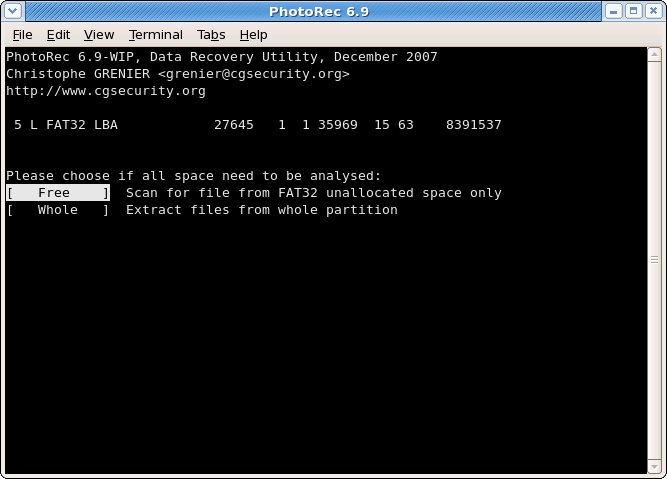

Most operating systems attempt to store data contiguously to minimize data fragmentation. After being initialized during file system formatting, the cluster or block size remains constant at various sectors. Functions of PhotoRec for Linuxįiles are stored in data blocks, also called clusters, under Windows. PhotoRec uses read-only access to the drive or memory card from which you are about to recover lost data for added security. PhotoRec is a companion application to TestDisk, which is used to recover lost partitions on a wide range of file systems and to make non-bootable disks bootable again.

Select the correct one and press Proceed.PhotoRec for Linux is a free multi-platform open-source application distributed under the GNU General Public License. You'll be prompted to choose the disk media. The layout is similar to TestDisk, and so is the navigation. This command will start PhotoRec and take you to the start menu. If you didn't install TestDisk earlier, check out the above section and install the testdisk package.

So, if you have already installed TestDisk, you don't need to install PhotoRec again. You can install PhotoRec on different Linux distros using the same commands used for installing TestDisk. However, files retrieved via PhotoRec don't retain their original filename. It uses file signatures to detect deleted files which makes it immensely powerful. The difference between TestDisk and PhotoRec is that the latter can retrieve files even from disks that have been corrupted beyond repair. You can use PhotoRec to recover all sorts of deleted files. It was developed for recovering deleted photos on Linux but evolved into a full-fledged program of its own. PhotoRec is another powerful data recovery program created by the developers of TestDisk. Recover Deleted Files on Linux Using PhotoRec


 0 kommentar(er)
0 kommentar(er)
